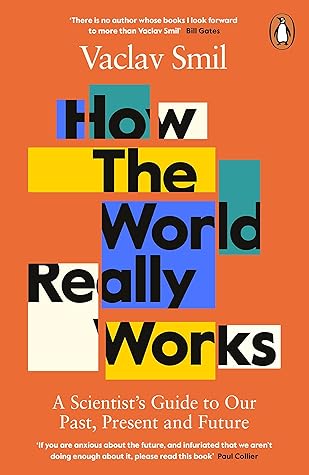More on this book
Community
Kindle Notes & Highlights
The SARS-CoV-2 pandemic made it clear that disagreements among experts may extend even to such seemingly simple decisions as wearing a face mask. By the end of March 2020 (three months into the pandemic) the World Health Organization still advised against doing so unless a person was infected, and the reversal came only in early June 2020.
Most modern urbanites are thus disconnected not only from the ways we produce our food but also from the ways we build our machines and devices, and the growing mechanization of all productive activity means that only a very small share of the global population now engages in delivering civilization’s energy and the materials that comprise our modern world.
In short, for decades it will be impossible to adequately feed the planet without using fossil fuels as sources of energy and raw materials.
Energy conversions are the very basis of life and evolution.
This led to what is still the most common definition of energy: “the capacity for doing work”—a definition valid only when the term “work” means not only some invested labor but, as one of the leading physicists of the era put it, a generalized physical “act of producing a change of configuration in a system in opposition to a force which resists that change.”
Producing chicken requires energies whose total is several times higher than the energy content of the edible meat.
Among large economies, Germany is the most notable example: since the year 2000, it has boosted its wind and solar capacity 10-fold and raised the share of renewables (wind, solar, and hydro) from 11 percent to 40 percent of total generation.
After all, in gloomy Germany, photovoltaic generation works on average only 11–12 percent of time, and the combustion of fossil fuels still produced nearly half (48 percent) of all electricity in 2020.
A nuclear renaissance would be particularly helpful if we cannot develop better ways of large-scale electricity storage soon.
Germany will soon generate half of its electricity from renewables, but during the two decades of Energiewende the share of fossil fuels in the country’s primary energy supply has only declined from about 84 percent to 78 percent: Germans like their unrestricted Autobahn speeds and their frequent intercontinental flying, and German industries hum on natural gas and oil.81 If the country replicates its past record, then in 2040 its dependence on fossil fuels will still be close to 70 percent.
People everywhere will point out the combustion of liquid fuels that power most of our transportation but the modern world’s most important—and fundamentally existential—dependence on fossil fuels is their direct and indirect use in the production of our food.
Eventually, our food production will change, but for now, and for the foreseeable future, we cannot feed the world without relying on fossil fuels.


